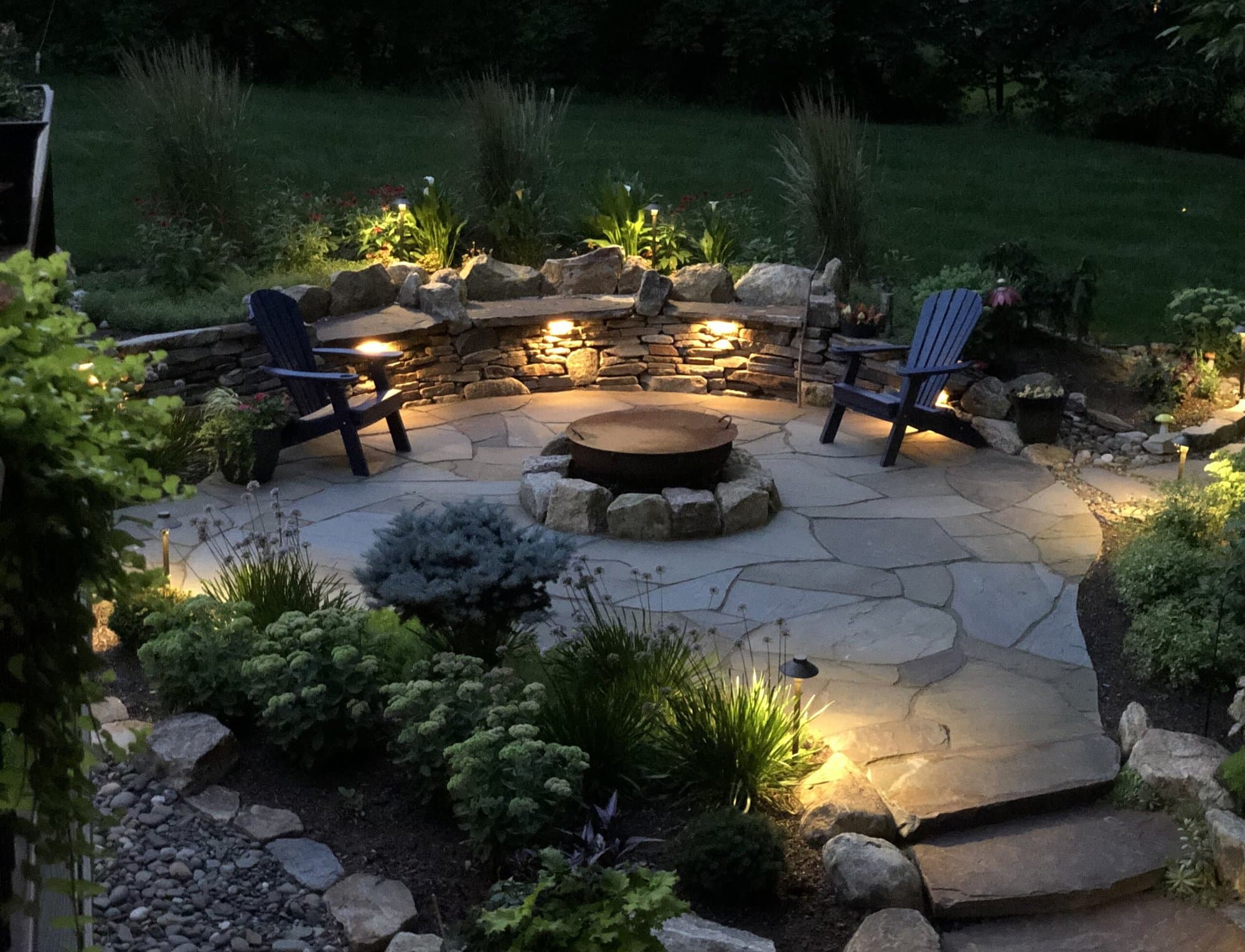Discover Creative Solutions with Specialist Palm Desert Landscaping
Wiki Article
A Comprehensive Overview to Creating and Implementing Effective Landscaping Solutions
The art and scientific research of landscape design prolong beyond simple appearances; they involve a thoughtful combination of style principles, environmental stewardship, and practical execution. What methods can one utilize to ensure these landscapes not just thrive but likewise grow in harmony with their environments?
Comprehending Landscape Style Principles
One could wonder what fundamental components add to efficient landscape layout. At its core, effective landscape design rests on numerous vital principles that assist the setup and option of elements within a room. These concepts include unity, proportion, equilibrium, and rhythm, each serving to produce an unified outside setting.Unity describes the natural relationship among various parts, making sure that they function together visually and functionally. Balance can be accomplished with symmetrical or asymmetrical setups, permitting the landscape to really feel secure and inviting. Percentage includes understanding the scale of elements in connection to each various other and the surrounding atmosphere, advertising aesthetic harmony and convenience.

Examining Your Outdoor Area
Prior to applying the concepts of landscape design, an extensive evaluation of your exterior room is crucial. This first assessment assists define the scope of your landscape design task and guarantees that your style straightens with the distinct features of your home. Begin by assessing the dimensions of your room, taking precise measurements to recognize the offered area for numerous elements such as pathways, gardens, and patios.Following, observe the existing features of your landscape, including topography, soil quality, and water drainage patterns. These factors substantially influence plant selection and positioning. Additionally, examine the sunshine exposure throughout different areas throughout the day, as this will influence the kinds of plants that prosper in your yard.
Take into consideration the microclimates developed by frameworks, trees, and various other obstacles, as they can affect temperature and moisture degrees. Lastly, bear in mind of any existing plants or hardscape components that you want to preserve or eliminate. This comprehensive analysis lays the groundwork for a reliable and knowledgeable landscaping remedy, guaranteeing that your layout is not just aesthetically pleasing yet sustainable and additionally functional for years to find.
Lasting Landscaping Strategies
These methods not only promote eco-friendly equilibrium but additionally enhance the visual and functional worth of a landscape. Implementing effective watering systems, such as drip watering, decreases water waste and ensures that plants receive sufficient wetness (Palm Desert Landscaping).
An additional reliable method is the critical placement of trees and bushes to supply all-natural windbreaks and color, therefore lowering power costs (Palm Homepage Desert Landscaping). Rainfall yards can be incorporated into the landscape design to manage stormwater overflow effectively, filtering system contaminants prior to they go into rivers
Picking the Right Plants
Choosing the right plants for your landscape is vital to accomplishing both aesthetic allure and eco-friendly consistency. The process begins with an understanding of your regional climate, soil problems, and the particular microenvironments within your landscape. Evaluating elements such as sunshine direct exposure, wetness degrees, and existing vegetations will help you select plants that grow in your one-of-a-kind setting.Think about incorporating indigenous plants, as they are well-adapted to neighborhood problems, need less maintenance, and support neighborhood wildlife. In addition, picking a varied range of varieties can boost biodiversity while reducing the threat of condition and pest episodes. It is vital to review the growth practices, blooming durations, and seasonal shades of potential plants to produce a cohesive and dynamic landscape.
In addition, consider the intended usage of the area; as an example, if the location will certainly experience high foot website traffic, this contact form go with resilient ground covers. By attentively selecting plants that line up with both your ecological demands and visual goals, you can produce a lasting landscape that not just boosts your property however additionally contributes favorably to the surrounding community.

Execution and Maintenance Techniques
When the best plants have been chosen for your landscape, the focus shifts to effective implementation and continuous upkeep methods. Successful installment starts with proper website preparation, which consists of soil screening to establish nutrient degrees and pH, adhered to by amending the dirt as needed. Very carefully set up plants according to their growth routines and navigate to these guys light demands, making certain sufficient spacing to promote healthy and balanced growth.Irrigation is a vital aspect of application. Develop a watering timetable that takes into consideration the certain needs of each plant varieties, readjusting for seasonal changes. Using drip watering systems can boost water effectiveness and minimize overflow.
Upkeep strategies must be executed to guarantee the longevity and vigor of your landscape. Regular tasks consist of weeding, mulching, and pruning to regulate development and protect against illness. Fertilizing needs to be carried out based on soil tests, providing the necessary nutrients without over-fertilizing.
Keeping track of for conditions and parasites is necessary; early detection can prevent significant damage. Seasonal adjustments to upkeep routines, such as preparing and winterizing perennials for springtime growth, will certainly guarantee that your landscape continues to be healthy and aesthetically enticing year-round.
Final Thought
Successful implementation and ongoing upkeep even more make sure the durability and vitality of landscapes. By integrating these components, landscapes can be transformed right into stunning, functional environments that promote biodiversity and contribute positively to neighborhood well-being.
One may wonder what fundamental elements contribute to efficient landscape design. At its core, successful landscape design hinges on a number of essential principles that guide the arrangement and choice of components within an area.Selecting the right plants for your landscape is crucial to achieving both visual charm and environmental consistency. It is vital to assess the development habits, blooming periods, and seasonal shades of prospective plants to develop a natural and dynamic landscape.
Once the appropriate plants have been chosen for your landscape, the focus moves to efficient application and ongoing upkeep approaches.
Report this wiki page